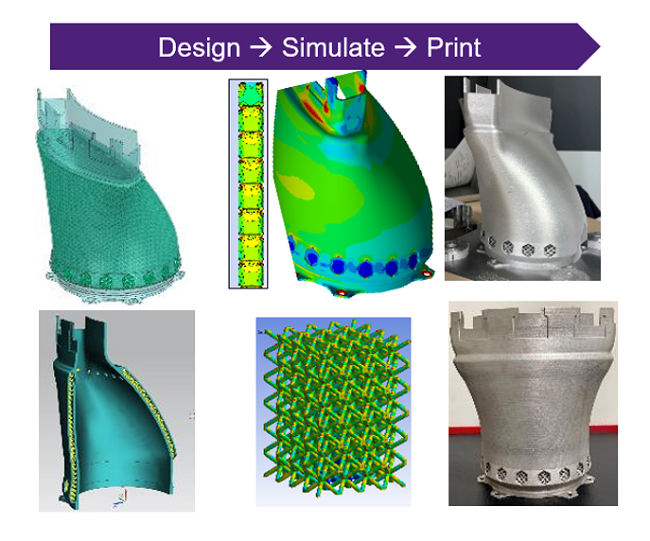In today’s 3D Printing News Briefs, an international research consortium of organizations is working to develop 3D bioprinted ankle implants. EnvisionTEC and Henkel are partnering to combine 3D printing and photopolymer chemistry expertise for end-use parts. Finally, Siemens Energy has published a new case study.
TRIANKLE Research Consortium Working on Bioprinted Implants
Medical conditions tendonitis and osteoarthritis (OA) are fairly common, impairing joint movement and causing joint cartilage to break down, which impacts not only a patient’s quality of life but also an economy’s healthcare systems. In Europe, it costs over €200 billion to treat these conditions each year, which is why TRIANKLE, a European research consortium of 12 partner organizations, has received €5.9 million in grant funding from the European Union’s Horizon 2020 to develop and create personalized scaffolds, using 3D bioprinting, to be used as implants for tissue regeneration in injured ankle joints. Beginning next month, the consortium will work over the four next years to develop these collagen- and gelatin-based implants, in order to increase functionality of the joints, decrease recovery time by 50%, and strengthen the EU’s biomedical sector.
The organizations, from the UK, Sweden, Spain, the Netherlands, and Germany, that make up the TRIANKLE consortium are as follows:
- Industry partner and coordinator: Naturin Viscofan GmbH
- SMEs: CELLINK AB, Cambridge Nanomaterials Technology, and Gradocell SL
- Research centers: Institute for Interfacial Engineering and Biotechnology IGB and Acondicionamiento Tarrasense Associacion
- Universities: University of Stuttgart, Universidad del País Vasco, and Eindhoven University of Technology (TU/E)
- Non-profit organizations: Futbol Club Barcelona Asociacion FCB and Osteoarthritis Foundation International OAFI
- Healthcare institution: Fundacio Clinic per a la Recerca Biomedica
EnvisionTEC and Henkel Support Volume Production of End-Use Parts
Henkel and EnvisionTEC announced that they are expanding their partnership agreement, and combining their expertise in 3D printing and photopolymer chemistry, to help increase adoption of production-level 3D printing, specifically for the volume production of end-use parts. Henkel’s increasing portfolio of industrial-grade Loctite materials are said to offer the functionality of FDM printing with the accuracy and excellent surface finish of SLA or DLP when paired with EnvisionTEC’s patented continuous Digital Light Manufacturing (cDLM) technology. Now, EnvisionTEC’s cDLM High Temperature (HT) platform will be added to Henkel’s 3D printing ecosystem, and the two will work together to validate Loctite-brand formulations on EnvisionTEC’s large-format Xtreme DLP Machine. This will allow DLP technology, which was invented and commercialized by EnvisionTEC, to move to the next level of industrial printing, using Henkel’s photopolymer materials to produce end-use parts on a larger scale.
“We are thrilled to expand our partnership with EnvisionTEC and their innovative cDLM technology. EnvisionTEC’s new E1 High Temp printer allows Henkel to move beyond the boundaries of viscosity limitations by enabling highly viscous or solid resins, such as Loctite 3955 FST, the first 3D photopolymer that passes vertical burn and aerospace FST standards and Loctite IND402, a single component elastomer material with high resilience and tensile strength, to be heated and printed under controlled conditions,” said Dr. Simon Mawson, Senior Vice President and Global Head of 3D Printing at Henkel. “These new generation Loctite materials combined with EnvisionTEC E1 High Temp printers will accelerate the adoption of industrial additive manufacturing.”
Siemens Energy Case Study on Enhancing SGT-A05 Performance
Siemens Energy has paired 3D printing with its SGT-A05 industrial gas turbine engine line in the past. Now, in its latest case study, the company discusses how it increased the performance of an SGT-A05 aeroderivative gas turbine’s combustion transition duct using advanced AM design technologies like topology optimization, analysis, and 3D printed lattice structures, courtesy of an in-house EOS M400-1 system and Siemens-qualified nickel superalloys. The concept could help decrease manufacturing lead time and the need for support structures, as well as add design features that conventional manufacturing technologies would be unable to complete. The part successfully went through combustion rig testing.
“The subject of this presentation is an SGT-A05 combustion transition duct, in which effusion cooling is minimized by the use of a dual-wall construction with an internal lattice structure,” the case study states. “This concept minimizes the need to inject cooling air into the hot gas path by passing air over a thin inner shell supported by a lattice structure. The lattice design was taken from sub-component testing, and optimized for flow considerations as well as structural ones. Numerous other design-for-additive techniques and principles were employed resulting in minimization of non-functional supports as well as multi-part combination which eliminates the need for assembly welding of transition-to-vane fixing devices.”
For more information about the case study, check out the Siemens Energy’s Material Solutions LinkedIn page.
Subscribe to Our Email Newsletter
Stay up-to-date on all the latest news from the 3D printing industry and receive information and offers from third party vendors.
You May Also Like
Precision at the Microscale: UK Researchers Advance Medical Devices with BMF’s 3D Printing Tech
University of Nottingham researchers are using Boston Micro Fabrication‘s (BMF) 3D printing technology to develop medical devices that improve compatibility with human tissue. Funded by a UK grant, this project...
3D Printing Webinar and Event Roundup: April 21, 2024
It’s another busy week of webinars and events, starting with Hannover Messe in Germany and continuing with Metalcasting Congress, Chinaplas, TechBlick’s Innovation Festival, and more. Stratasys continues its advanced training...
3D Printing Webinar and Event Roundup: March 17, 2024
It’s another busy week of webinars and events, including SALMED 2024 and AM Forum in Berlin. Stratasys continues its in-person training and is offering two webinars, ASTM is holding a...
3D Printed Micro Antenna is 15% Smaller and 6X Lighter
Horizon Microtechnologies has achieved success in creating a high-frequency D-Band horn antenna through micro 3D printing. However, this achievement did not rely solely on 3D printing; it involved a combination...
































